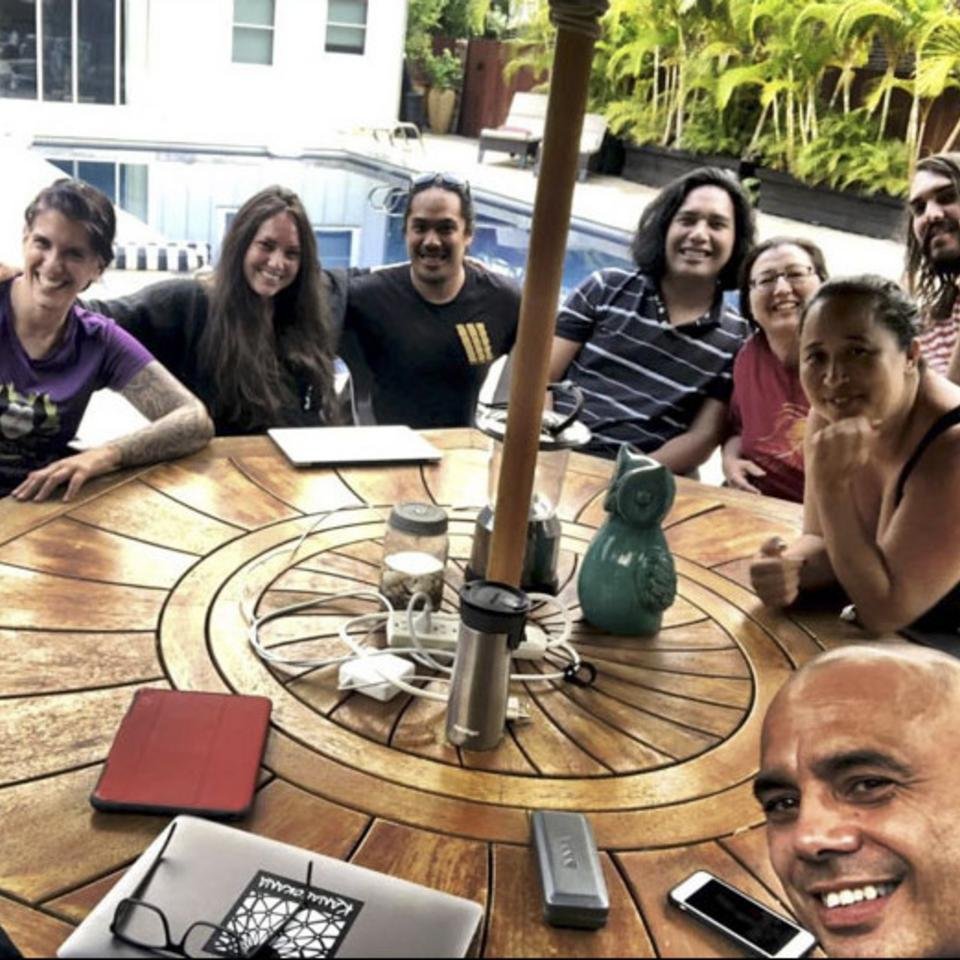Caleb Moses joined indigenous artists, writers, technical experts and academics in Hawai’i, as a follow up to the AI workshop he went to in March.
The workshop in May was organised by researchers from Concordia University in Montreal and funded by the Canadian Institute for Advanced Research (CIFAR).
“Our goal was to use our collective expertise to produce a position paper on AI from an indigenous perspective. CIFAR are looking for these perspectives – there are a number of people in AI research who really want input from indigenous people as to how it all works.”
Caleb says that some groups at the workshop discussed relevant topics and documented their conversations, but he went along with the intention of creating something.
“We built a prototype object recognition system for native Hawai’ian and Cheyenne (a native American language spoken by the Cheyenne people). Our version was basic but it showed that the idea would work.”
The system took the form of an app like the Māori language learning platform Kupu, where you take a photo on your phone and the name of the object is provided.
“It showed what an indigenous AI product could look like. And the process of building the app usefully identified some of the pressure points you could come across in this type of project.”
“One pressure point was deciding how we would reach a consensus about which translation to use for a particular word. The word for ‘backpack’ for example: two native Hawai’ians on our team had a different word, so they took it to Facebook to ask other Hawai’ians but they just got more words!”
Caleb’s role was to compile the Hawai’ian and Cheyenne dictionaries. He used web scraping and consulted with local knowledge experts to decide which sources were useful, accessible and reliable.
The prototype team consisted of Michael Running Wolf (a machine learning engineer at a large tech company), his wife Caroline Old Cayote who managed the project, Joel Davison an Australian Aborigine of Cadigal descent and front end developer, Professor Noelani Arista of the History faculty at the University of Hawaii at Manoa, and Isaac Pang, a local Native Hawaiian literature graduate student at the University of Hawaii at Hilo.
“The process raised some compromises we had to make. Because we modified a working English model and swapped the words over, we got labels for things that weren’t important in such a different context. Like what is the Hawai’ian word for skiing? The answer is, there isn’t one!”
Some tricky issues were also encountered in Cheyenne. “Sometimes the name of an object changes depending on its state. Michael explained to us that for a smoking pipe, it has one name when it’s assembled, but when you take it apart to put it away, it has a different name. We had to think about how to deal with that.”
In addition, the group members have committed to writing a paper with their perspectives on the project. The prototype on Github will also be made public at some point.
“I enjoyed the atmosphere (it was somewhere between a conference and a hackathon) and having good people to bounce ideas off. I was glad to offer an opinion on AI from the more technical end of the spectrum, alongside the artists and the academics in AI and indigenous studies.”
Read about the indigenous protocols and artificial intelligence workshop held in March.


